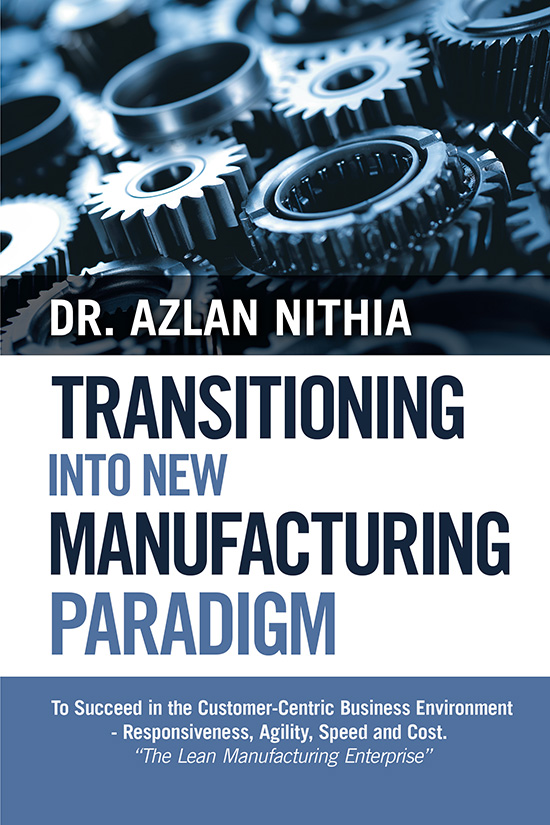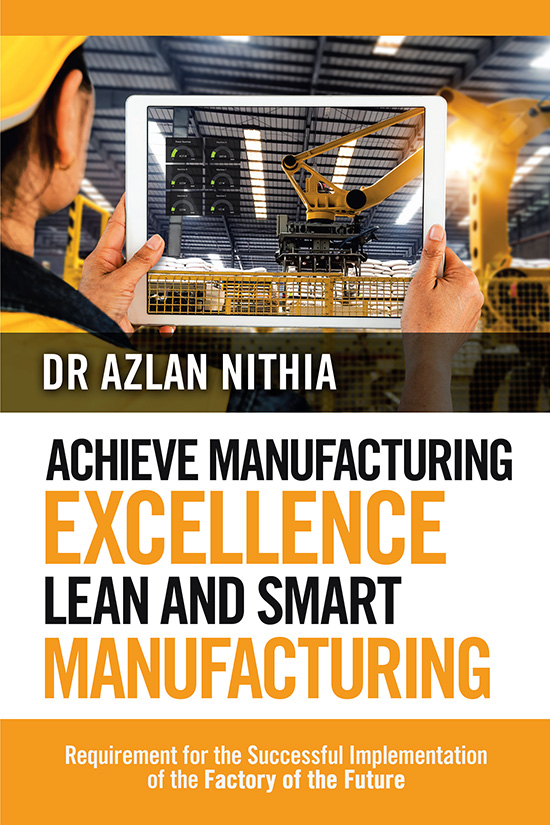The Books
 Transitioning into New Manufacturing Paradigm
Transitioning into New Manufacturing Paradigm
To Succeed in the Customer Centric Business Environment — Responsiveness, Agility, Speed and Cost. “The Lean Manufacturing Enterprise”
The customers prefer small lot sizes, multi-models with model variations, short delivery lead times, and low cost. The organization that cannot transition to the new manufacturing paradigm of buyer-centric strategy, their rigidity of the current mass production (seller-centric), will eliminate them from the industry. There are many organizations that implemented robotics and automation to reduced labor, but, they have also increased their changeover time and made the internal processes more complex, rigid and created imbalance to the flow due to the single-minded focus of only labor reduction. To survive and succeed in the fierce market competition, the organizations must transition to the new manufacturing paradigm. The organizations must develop their people capabilities, agility, speed, responsiveness and be able to deliver products at the lowest cost. The concept of mass production of large lot sizes and lesser model changeovers are not acceptable, this thinking must be evaporated to succeed in the new customer-centric business.
This book introduces practically proven concepts that will transition the manufacturing organization from the mass production focus built on rigidity to a high-performing organization equipped with agility, flexibility, short lead times, multi-model production, and new organization culture that drives daily continuous improvement and problem-solving. This book shows the what’s and how’s to transition to the new manufacturing paradigm and successfully compete to win in the fierce customer-centric business.
 Achieve Manufacturing Excellence Lean and Smart Manufacturing
Achieve Manufacturing Excellence Lean and Smart Manufacturing
Requirement for the Successful Implementation of the Factory of the Future
The new industrial revolution in manufacturing is primarily focused on the implementation of smart manufacturing technologies leading to the factory of the future. This will require the machines, robots and processes to be digitally connected to deliver real-time analysis and monitor them for performance and efficiencies. To take advantage of these important digital technologies, the manufacturing processes and equipment must be operating very efficiently, predictable and the processes always need to be performing at their optimal levels.
The factories of the future will have smart innovations operationalized with transformational digital technologies, new business models, and processes that will increase profits, reduce lead time, reduce human interventions, decrease product costs, enhance the consumer experience, and increase global market share by being relevant and responsive to any digital market disruptions.
The lean manufacturing principles must be the foundation and constantly be strengthened so that smart manufacturing applications can be efficiently implemented to deliver the required manufacturing productivity and achieve customer responsiveness. To become a customer-driven company, the companies must become a solution provider and constantly improve the end to end supply chain. The goal of smart manufacturing is the value creation for the consumers and the advanced technological innovations to deliver sustainable top-line growth for the companies and to gain a bigger market share.

SUCCESSFUL MANUFACTURING TRANSFORMATION
RAPIDLY GET OUT OF MANUFACTURING CRISIS AND ACHIEVE GLOBAL MANUFACTURING COMPETITIVENESS
This book is a good practical handbook for every manufacturing leaders and it is based on proven and successful manufacturing transformation practices, on how to get a manufacturing organization out of an extreme operational crisis (or nearing a closure). Transforming an organization in crisis and turning it around from a manufacturing crisis and finally to be able to achieve global competitiveness in manufacturing operations in any country. This book is based on extensive work experience, learning from failures and successes, experimentations, and proven approaches by the author himself. It references to the author’s various successful manufacturing transformations achieved at large-scale multi-national manufacturing organizations and how the author re-positioned those organizations into becoming a globally competitive operation.
If an organization is always thinking about global competitiveness, and constantly driving its organization towards world class efficiencies, delivering the sustainable competitiveness in cost and with the best lead-times, it is almost impossible to get eliminated by any other competitions globally. The manufacturing organizations that slowly starts to slip away from being at world class efficiencies and its metrics start losing its global competitiveness, in cost, lead time and productivity will not be able to compete with the global competitions. These are the organizations that will easily get into a manufacturing crisis, loses its competitiveness and finally it loses its total business to its competitors. These companies will ultimately get wiped out of the business.
This book is also about reimagining the manufacturing industries to achieve global competitiveness by the successful adoption of greater digital technologies of a connected factory to increase efficiency, speed and agility. This requires the ability to be able to rapidly transit into the new smart manufacturing paradigm with how to achieve the status of Smart Manufacturing, Factory of the Future and to be quick in responding to the demanding market changes with the digitally connected operations and the marketplace. A detailed step by step approach is clearly explained and how to overcome those implementation challenges.




